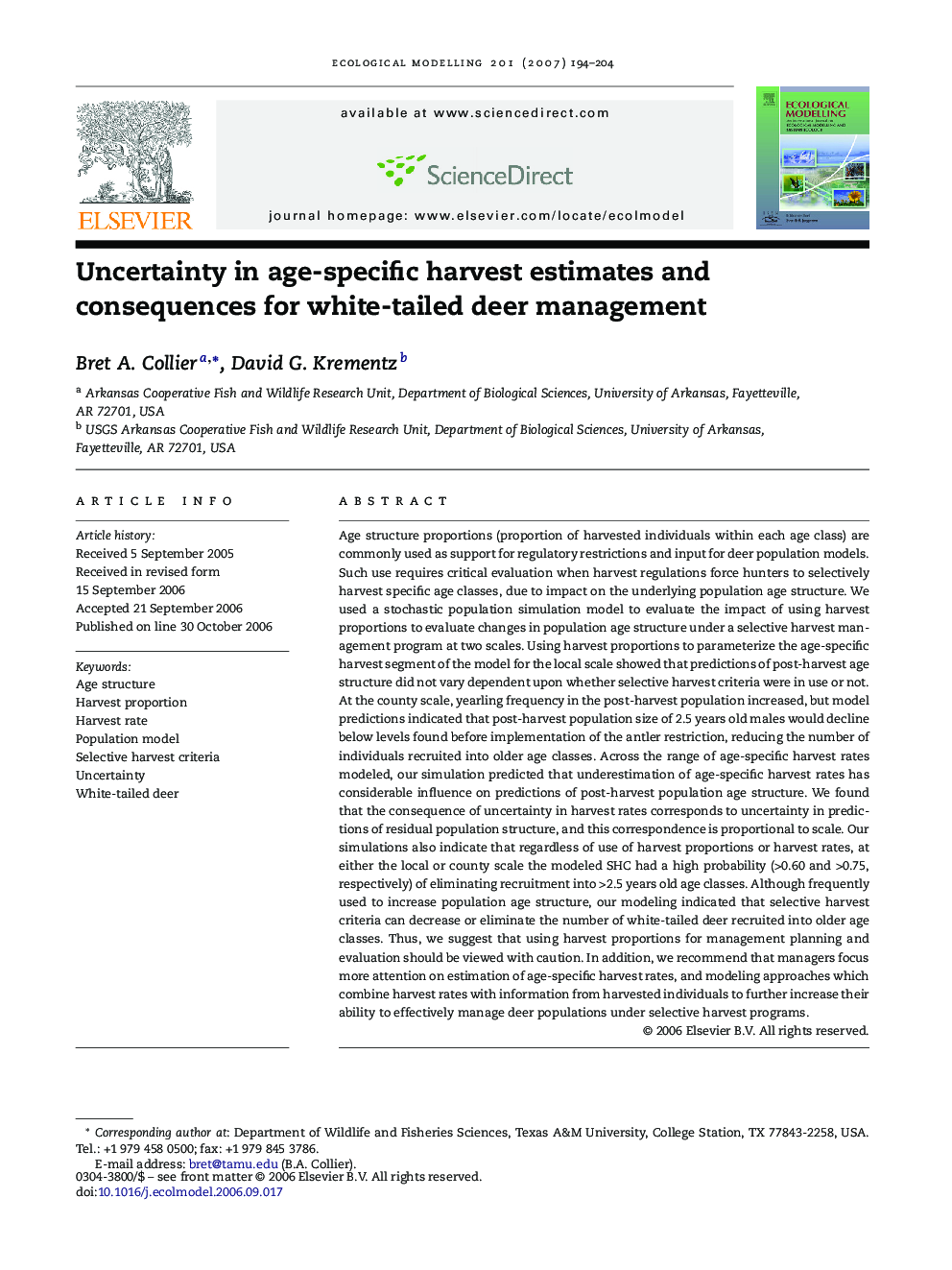| Article ID | Journal | Published Year | Pages | File Type |
|---|---|---|---|---|
| 4378779 | Ecological Modelling | 2007 | 11 Pages |
Age structure proportions (proportion of harvested individuals within each age class) are commonly used as support for regulatory restrictions and input for deer population models. Such use requires critical evaluation when harvest regulations force hunters to selectively harvest specific age classes, due to impact on the underlying population age structure. We used a stochastic population simulation model to evaluate the impact of using harvest proportions to evaluate changes in population age structure under a selective harvest management program at two scales. Using harvest proportions to parameterize the age-specific harvest segment of the model for the local scale showed that predictions of post-harvest age structure did not vary dependent upon whether selective harvest criteria were in use or not. At the county scale, yearling frequency in the post-harvest population increased, but model predictions indicated that post-harvest population size of 2.5 years old males would decline below levels found before implementation of the antler restriction, reducing the number of individuals recruited into older age classes. Across the range of age-specific harvest rates modeled, our simulation predicted that underestimation of age-specific harvest rates has considerable influence on predictions of post-harvest population age structure. We found that the consequence of uncertainty in harvest rates corresponds to uncertainty in predictions of residual population structure, and this correspondence is proportional to scale. Our simulations also indicate that regardless of use of harvest proportions or harvest rates, at either the local or county scale the modeled SHC had a high probability (>0.60 and >0.75, respectively) of eliminating recruitment into >2.5 years old age classes. Although frequently used to increase population age structure, our modeling indicated that selective harvest criteria can decrease or eliminate the number of white-tailed deer recruited into older age classes. Thus, we suggest that using harvest proportions for management planning and evaluation should be viewed with caution. In addition, we recommend that managers focus more attention on estimation of age-specific harvest rates, and modeling approaches which combine harvest rates with information from harvested individuals to further increase their ability to effectively manage deer populations under selective harvest programs.
